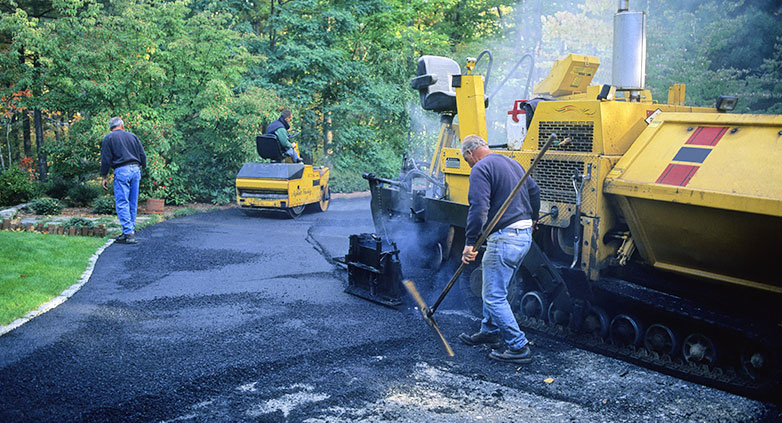Asphalt Parking Lot Repair – Your Guide to Fixing Cracks
Asphalt parking lot repair is essential for maintaining a safe, aesthetically pleasing, and functional space. Ignoring minor issues can lead to significant, costly problems over time.
Addressing asphalt parking lot repair promptly can prevent small cracks and holes from evolving into larger, more hazardous issues. The repair process often involves patching potholes, sealing cracks, and applying a fresh coat of sealant to protect the surface from water infiltration, oxidation, and further damage. Regular maintenance, including cleaning and inspections, is crucial for extending the lifespan of an asphalt parking lot. By taking proactive steps, property owners can ensure a durable, smooth, and visually appealing parking area for visitors and employees.
For more insights on maintaining your asphalt parking lot and preventing future damages, continue exploring our comprehensive guide.
How to Repair Cracks in Asphalt Parking Lots in 7 Steps
Here’s a 7-step guide to repairing cracks in your asphalt parking lot!
1. Clean the crack thoroughly
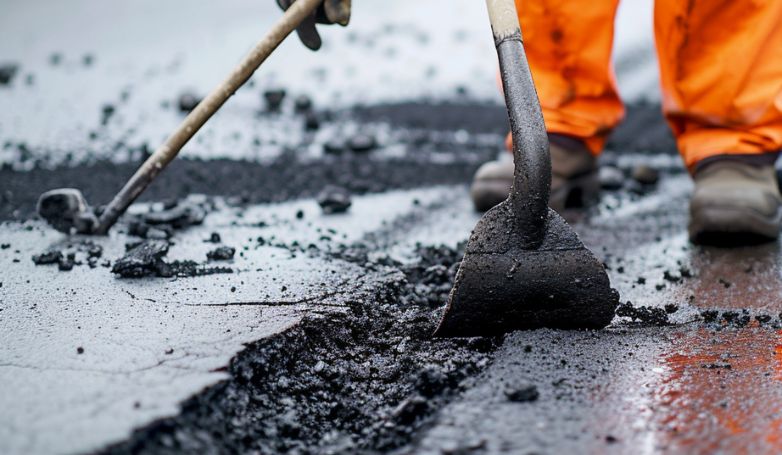
Initiating a successful asphalt parking lot repair begins with meticulous cleaning. Prioritize a thorough removal of debris, dirt, and loose particles using a wire brush or compressed air. This ensures an optimal surface for the subsequent crack filler to adhere effectively, setting the stage for a durable and resilient repair that can withstand the daily stresses of vehicular traffic and environmental elements.
2. Use a high-quality crack filler
Choosing the right crack filler is paramount for a lasting solution. Opt for a high-quality product specifically formulated for asphalt surfaces. Premium-grade fillers offer superior adhesion and durability, forming a protective barrier that not only addresses the existing crack but also helps prevent further deterioration. This strategic choice contributes significantly to the overall longevity and structural integrity of your parking lot.
3. Apply the filler
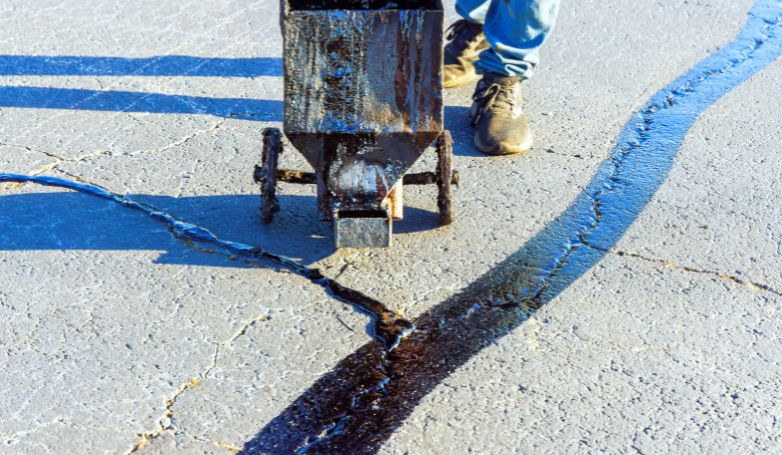
Achieving a precise asphalt parking lot repair is crucial for optimal results. Employ a caulking gun for a uniform application of crack filler along the entire crack length. This meticulous approach guarantees a consistent and well-sealed repair, reducing the possibility of water infiltration and potential structural damage. The controlled application process with a caulking gun enhances the overall effectiveness of the repair.
4. Smooth the surface
Post-filling, use a trowel to level and smooth the repaired surface. Beyond its aesthetic benefits, a smooth finish promotes seamless integration with the surrounding asphalt, contributing to the overall durability and performance of the repaired area. This meticulous approach not only enhances visual appeal but also plays a crucial role in the long-term effectiveness of the repair.
5. Allow proper drying time
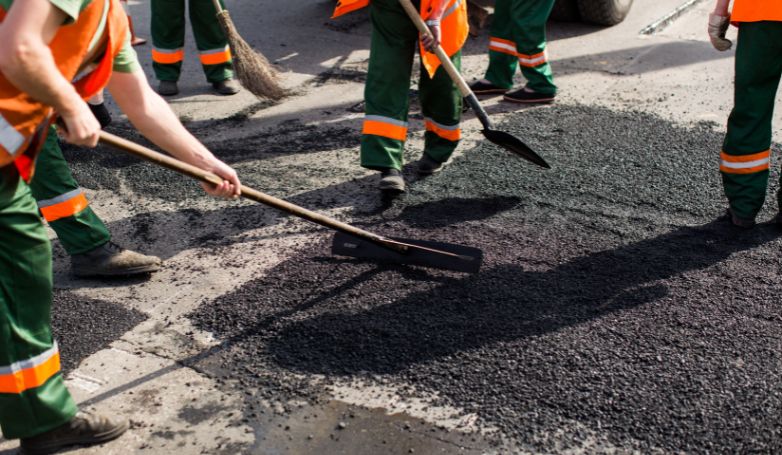
Exercising patience during the repair process is imperative for optimal results. Allow the applied filler sufficient time to dry and cure according to the manufacturer’s recommendations. Considering environmental factors such as temperature and humidity, adhering to the prescribed drying time ensures a robust and resilient repair. Patience in this phase is a key investment in the long-term stability of your parking lot.
6. Seal the repaired cracks for durability
To fortify the repair and safeguard against future damage, consider applying a sealant over the mended cracks. This additional layer of protection prevents water intrusion and environmental wear, ensuring the longevity of the repair. Sealing the repaired areas is a proactive measure that enhances the overall durability and resistance of your asphalt surface, contributing to its sustained performance over time.
7. Regularly inspect and maintain asphalt surface
Incorporating a routine inspection schedule is essential for proactive asphalt parking lot maintenance. Utilize a caulking gun for precision in crack filling, conducting regular inspections to promptly identify and address any cracks that may arise. Beyond the repair phase, consistent maintenance practices like crack filling and sealcoating play a crucial role in enhancing the overall longevity and performance of your parking lot. This proactive approach effectively mitigates potential issues, ensuring a safe and well-maintained surface for both vehicles and pedestrians.
Types of Cracks in Asphalt Parking Lot

Cracks in an asphalt parking lot not only mar its appearance but also pose a threat to its structural integrity. Understanding the various types of cracks that can afflict your pavement is crucial for effective maintenance and repair.
Longitude cracks
These linear cracks, often running parallel to the pavement’s direction, are a common sight on neglected asphalt surfaces. Caused by natural aging, traffic loads, or temperature fluctuations, these cracks can compromise the structural integrity of your parking lot. Addressing them promptly through crack sealing helps prevent water infiltration and further damage.
Block cracks
When the asphalt surface breaks into rectangular pieces resembling a shattered window, block cracks emerge. Usually caused by the pavement’s inability to accommodate thermal expansion and contraction, this type of cracking demands attention. Proper repair methods involve filling and sealing the gaps to prevent water penetration and inhibit the progression of damage.
Alligator cracks
Resembling the scales of an alligator’s skin, these interconnected cracks signal severe distress in the pavement. Often resulting from a weakened foundation, heavy traffic, or insufficient pavement thickness, alligator cracks demand immediate action. Ignoring these can lead to extensive damage, including potholes. Resurfacing or complete removal and replacement may be necessary to rectify this advanced form of cracking.
What causes these cracks
Cracks in asphalt parking lot pavement, regardless of geographic location, allow water to seep through the surface to the underlying base. Parking lots exposed to typical winter weather will experience water inside the asphalt that freezes and then thaws several times, causing expansion and contraction of cracks. In turn, the cracks widen and ultimately break up the surrounding asphalt. And, before you know it, the potential for slip-and-fall or other injuries exists.
Water runoff can damage the subgrade, resulting in raveling, rutting, or widespread areas of cracking.
Repairing Cracks and Its Cost
Cracks in your asphalt parking lot can be more than just an eyesore; they can lead to significant damage if not addressed promptly. Fortunately, there are cost-effective methods to repair and protect your investment.
Crack Sealing
| Cost Range per Unit | Key Factors Influencing Cost |
|---|---|
| $0.50 – $3.00 per linear foot | Severity of cracks, accessibility, type of sealant |
Crack sealing typically ranges from $0.50 to $3.00 per linear foot, depending on factors such as the severity of the cracks, accessibility, and the type of sealant used. Investing in crack sealing is a budget-friendly preventive measure that not only addresses current issues but also saves you from potentially expensive repairs down the road.
Sealcoating
| Cost Range per Unit | Key Factors Influencing Cost |
|---|---|
| $0.15 – $0.30 per square foot | Lot size, condition, type of sealant applied |
Sealcoating costs vary based on factors like lot size, condition, and the type of sealant applied. On average, you can expect to pay between $0.15 to $0.30 per square foot for sealcoating. While the initial cost is modest, the long-term savings by preventing cracks and enhancing the lifespan of your asphalt make sealcoating a cost-effective solution for parking lot maintenance. It not only enhances the aesthetics but acts as a protective shield, reducing the need for extensive repairs and ensuring a resilient surface over time.
Types of Potholes in Asphalt Parking Lot
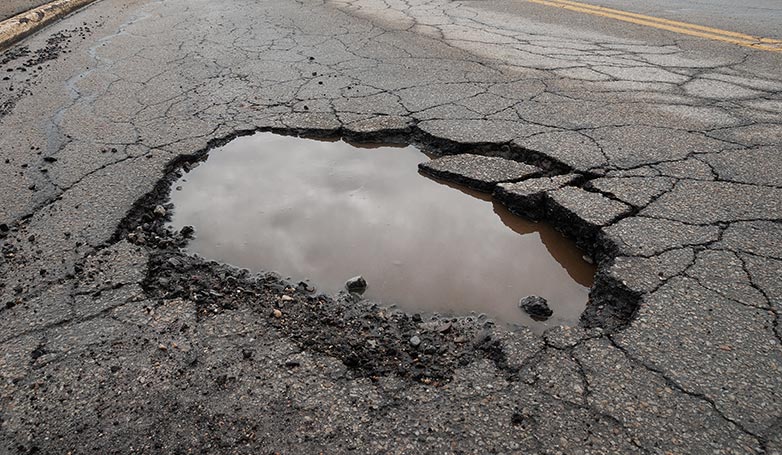
Here are some common types of potholes encountered in asphalt parking lots: Chuckhole Potholes, Edge Potholes, and Slippage Potholes. Let’s take a look!
Chuckhole Potholes
Chuckhole potholes, characterized by their irregular shape and depth, often result from localized pavement distress. These nuisances pose a hazard to vehicles and pedestrians alike. Repairing chuckhole potholes involves meticulous cleaning, filling, and compacting to restore a smooth and safe surface.
Edge Potholes
Found along the perimeter of the parking lot, edge potholes typically develop due to water runoff and insufficient edge support. Repairing edge potholes entails addressing drainage issues and reinforcing the pavement’s edge to prevent further deterioration.
Slippage Potholes
Slippage potholes occur when the upper layer of asphalt loses its bond with the underlying surface, leading to dislodged sections. Repairing slippage potholes involves removing the compromised asphalt, applying a tack coat, and reapplying a new layer to ensure a secure and lasting repair.
What causes potholes in asphalt parking lots
Potholes are bowl-shaped cvities that result from the localized break-up of the pavement.Moisture intrusion is the leading cause of pavement deterioration. Rainwater seeps into small cracks in the asphalt and puddles between the asphalt layer and the road. Low temperatures freeze the water, forcing the asphalt upwards.
Once the ice thaws, the water is absorbed into the weakened roadbed and leaves behind a cavity. Vehicle traffic breaks the surface apart and pushes it down into the weakened roadbed. Larger cracks and potholes form when the crumbling asphalt fills the cavity.
Repairing Potholes and Its Cost
Repairing potholes in your asphalt parking lot is not just about addressing immediate issues but also a strategic investment in the long-term stability of your surface. Understanding the methods and associated costs is crucial for effective maintenance.
Pothole Patching
| Cost Range per Unit | Key Factors Influencing Cost |
|---|---|
| $50 – $300 per pothole | Size, depth, and extent of pothole damage |
Pothole patching costs can vary based on the size and depth of the potholes, ranging from $50 to $300 per pothole. This method involves filling the pothole with suitable asphalt material, ensuring a durable and level repair.
Infrared Asphalt Repair
| Cost Range per Unit | Key Factors Influencing Cost |
|---|---|
| $100 – $150 per square foot | Size of the repair area and extent of asphalt damage |
Infrared asphalt repair, where existing asphalt is heated and recycled, can cost between $100 and $150 per square foot. While relatively pricier, this method offers a seamless and long-lasting solution, blending the repair seamlessly with the surrounding pavement.
Other common asphalt issues that require asphalt parking lot repair
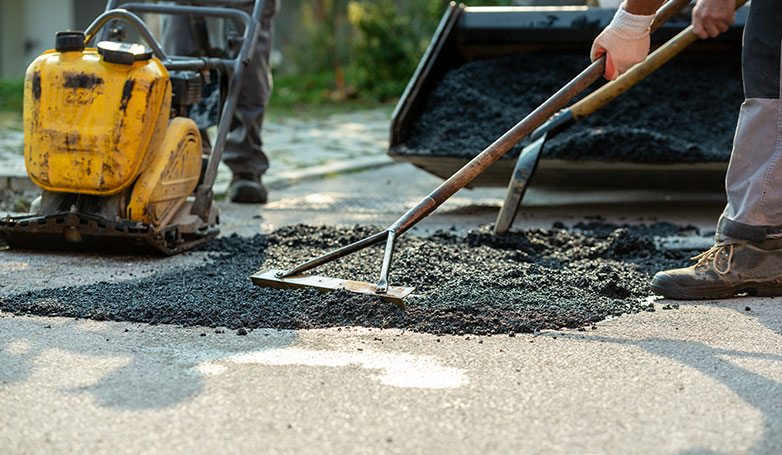
Let’s take a look at common asphalt issues that require asphalt parking lot repair.
Deteriorated Joints
Poorly constructed asphalt parking lot joints result in joint failure. Joint failure begins when air, water, and contaminants enter the joint through segregation, not enough compaction, or a lack of bonding between adjacent strips.
Many types of pavements suffer structural failure due to deterioration from heavy load traffic. Failure shows up initially as “alligator cracking,” a form of fatigue cracking. Cracking occurs under repeated traffic from heavy loads due to subgrade weakness, insufficient pavement thickness, excessive loading, or a combination of these factors.
When a base failure occurs, remove the failed pavement, shore up the material underneath and replace the asphalt. You need to know what caused the asphalt failure and address it. If the problem is a weakness in the subgrade, you must repair the weakness. If the problem was too little pavement thickness, thin pavement should be undercut, and a thicker layer of asphalt added.
Raveling
Raveling is the loss of aggregate particulates from the pavement surface of the asphalt parking lot. In fact, raveling occurs when the asphalt binder hardens and loses its grip on the stone or when you use a poor-quality mix.
If caught early, you can address raveling by seal coating. If the condition is severe, an asphalt overlay or surface treatment is needed.
Read more: Infrared Asphalt Repair
Rutting
Rutting in an asphalt parking lot is a channeled depression from wheel-tracks. It is caused by:
- too thin pavement;
- lack of compaction of the asphalt, soil, stone base;
- a weak mix of asphalt; or
- moisture infiltration.
If rutting is minor or has stabilized, the depressions can be filled and overlaid with either hot or cold asphalt mix. If deformations are severe, the rutted area should be undercut, removed, and then replaced with suitable asphalt material.
Slippage
Slippage cracks are small crescent-shaped cracks or tears in the surface layers of the asphalt parking lot where the new material has slipped over the underlying existing pavement. A lack of bonding between layers causes this problem.
The lack of bond could occur because the installer did not develop a bond between the asphalt layers with a tack coat. The lack of bond could also be because they did not bond the asphalt with a prime coat of the underlying stone. Contaminants like oil and dirt will prevent the asphalt layers from bonding or adhering together.
Remove all of the pavement layers showing slippage. After removing the failed pavement layer, wait until the remaining pavement is clean and dry. Then, apply a tack coat to hold the old and new material together. Place and compact the new layers of asphalt.
How to avoid common parking lot issues
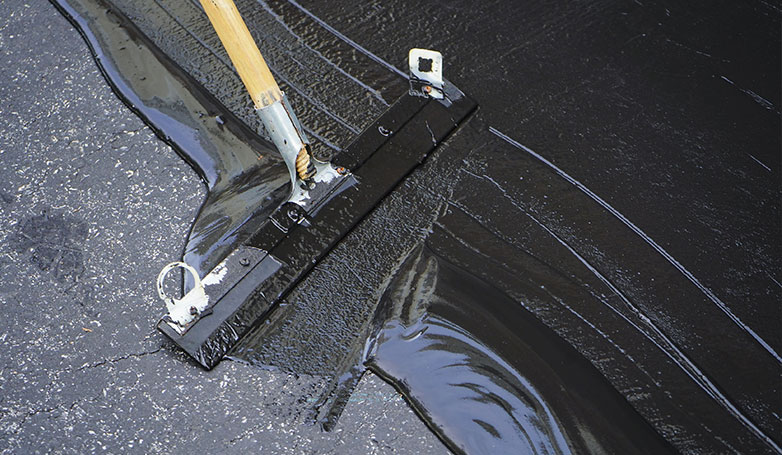
Here are some tips to avoid the most common problems of parking lots.
Routine inspections
Routine asphalt parking lot inspections are the best way to be proactive and prioritize repairs, thus saving money over time. But, the time of year matters, too. Isolated cracks that are ¼” to ¾” wide are good candidates for crack sealing. As soon as the weather permits, it would help if you sealed the asphalt cracks. However, if you notice rutting, alligator cracking, or potholes, call your preferred paving contractor.
A typical maintenance plan for an asphalt parking lot will include routine crack sealing, a seal coat, and lot marking. A maintenance plan can save $0.10-$0.30/SF per year over ten years.
Proper Drainage
Water is the #1 enemy of asphalt parking lots. Supplement your drainage system by installing new catch basins in low-lying areas. Routinely inspect existing catch basins to keep drains clear of debris and to perform any adjustments or other maintenance. Having proper drainage installed is one of the best ways to avoid needing asphalt parking lot repair.
Proper maintenance
Routine maintenance slows the deterioration of your asphalt parking lot pavement by protecting it from its natural Enemies, sun, water, and air. Parking lots that are maintained last for a more extended period when compared to those without any maintenance plan.
Identifying pavement cracks and sealing them as soon as possible is the most cost-effective preventative maintenance procedure.
Parking lot maintenance tips
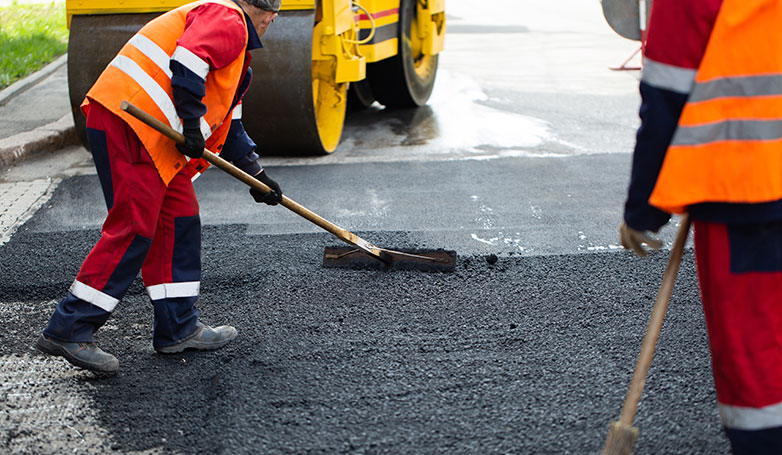
Be sure to follow these maintenance best practices to ensure your parking lot is properly cared for. If you want to avoid the need for potentially costly asphalt parking lot repair, do not overlook the importance of proper maintenance.
- Perform monthly inspections, so you don’t miss anything that requires attention. You should also schedule an annual check-up of your asphalt parking lot once every year.
- Keep it Clean. Sweep away the dirt and debris or hire a parking lot cleaning company to keep it clean for you. Trash makes a parking lot look abandoned, and that’s the last thing you want your customers to think as they drive past.
- Clean Oil Stains. Oil will break down the components in asphalt, making it wear out more quickly.
- Keep current with repairs, such as crack filling and seal coating. It is essential to extending your asphalt parking lot’s lifespan.
- Annually before each rainy season, fill the cracks in your parking lot to reduce damage from all water sources.
- Make sure all storm drains are working correctly. Water should drain away from the pavement. Water left on the surface can seep through the asphalt openings and cause damage.
- Repair any tripping hazards in your asphalt parking lot to prevent accidental falls. Tree roots can lift asphalt and make it very uneven, resulting in a trip and fall hazard for your customers.
- Annually refresh the parking lot striping and road markings. If the lines blur or fade to where they’re barely visible, your customers won’t be able to tell where one parking spot stops and the next one begins. Undistinguishable lines turn your parking lot into chaos where unnecessary car accidents can occur.
- Every two or three years, your parking lot should be seal coated. Sealing revitalizes old asphalt parking lot surfaces that have become dry and brittle with age. Small surface cracks and voids need to be sealed to prevent more extensive damage and expensive pavement replacement.
Conclusion
Protecting your asphalt parking lot investment should include planning a regularly scheduled pavement maintenance and repair program with a qualified paving professional in your area.
Most professional paving contractors offer inspection and maintenance plans that will fit your budget and keep your asphalt parking lot clean and in good repair. Local paving contractors will be familiar with the weather patterns in your area and schedule parking lot maintenance when you need it most. They will help you prevent damage to our parking lot by providing regular preventative maintenance.
Asphalt parking lot repair and maintenance is an ongoing commercial service. Trust us to help you locate a paving contractor near you to handle your asphalt parking lot maintenance and repair needs.

